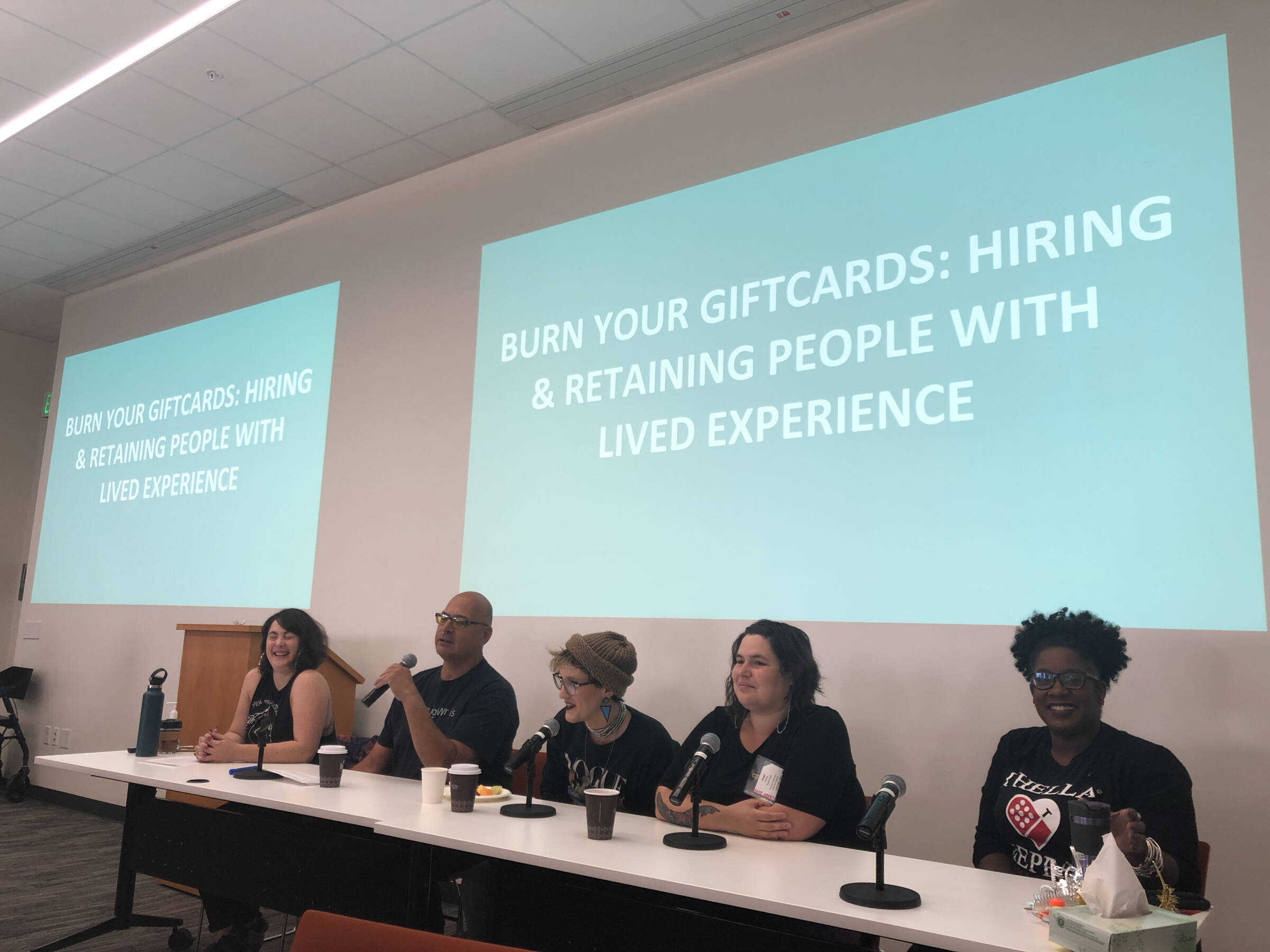Harm Reduction
Work in Action
Credit: Nigel Brunsdon
The best way to understand the effectiveness of harm reduction strategies and solutions is to look at the results of active harm reduction programs.
National Harm Reduction Coalition puts strategies and ideas into action in the real world to create measurable and dramatic change.
See how we’re transforming lives and communities together.
HepConnect Initiative: Responding to the Rise of Hepatitis C in Greater Appalachia
The single largest funding in history specifically for harm reduction programs.
Location
Indiana, Kentucky, North Carolina, Tennessee and West Virginia
Partner
Gilead Sciences

Awarded $5.3 million in grants to 32 organizations for 44 projects to respond to the rise in hepatitis C rates in Greater Appalachia.
Faith in Harm Reduction: Faith-Based Leadership in Harm Reduction
The only program in the country dedicated to building capacity and mobilizing community at the intersection of harm reduction and faith-based organizing.
Location
National
Partner
Judson Memorial Church

Worked with unions of people who use drugs and regional harm reduction programs to co-create community, advocacy, healing and justice events in 10 states
California Regional Efforts: Building on Our Roots for a Lifetime
Statewide training, technical assistance, and convenings to support leadership and connection between harm reduction programs and beyond
Location
California
Partners
California Syringe Exchange Programs (CASEP) coalition

Offering training and technical assistance to 50+ syringe service programs and counting
The DOPE Project: Saving Thousands of Lives Through Naloxone
The largest single-city overdose prevention and naloxone distribution program in the United States.
Location
San Francisco
Partner
A wide range of health organizations, researchers, and harm reduction groups

Trained more than 13,000 people in San Francisco alone to administer naloxone, reversing at least 1,500 overdoses each year.
New York Regional Efforts: Increasing Statewide Harm Reduction Capacity
Naloxone and syringe access, advocacy work and community outreach across New York
Location
New York
Partners
New York State Department of Health, HepCure, VOCAL-NY

We spent thousands of hours writing curricula, training, and offering support to harm reduction organizations and beyond to create safe and supportive services for people who use drugs in New York
California Harm Reduction Initiative (CHRI): Funding Syringe Services Programs Statewide
Established by the California Budget Act of 2019 to strengthen substance use disorder response by supporting syringe services programs (SSPs)
Location
California
Partner
California Department of Public Health, Office of AIDS

$15.2 million in grants over three years to support the expansion of harm reduction across the state
Wyoming Statewide Initiative: Increasing Access in Rural Frontier States
Increasing access to services in rural frontier regions, beginning with a two-year statewide initiative in Wyoming
Location
Wyoming
Partner
Wyoming State Health Department

Building capacity among Wyoming community providers
Lighthouse Learning Collective: Creating Safer Spaces with LGB/TGNC+ People in New York
Bi-monthly collaboration sessions bring harm reduction and LGBQ/TGNC+ support organizations in New York City together.
Location
New York
Partner
New York City Department of Health

Promoting harm reduction values in LGBT/TGNC+ spaces and tools to talk about the intersection of drug use
COVID-19 Response: Harm Reduction Amidst the COVID-19 Pandemic
Real-time resources for people who use drugs and harm reduction program providers during the pandemic
Location
National
Partner
Higher Ground Harm Reduction, Reynolds Health Strategies, Vital Strategies

Rapid response to the needs of communities during a time of crisis
Crystal Meth & Black Latinx Blueprint Projects: Serving an Underserved Population
Tools and information to support men who have sex with men (MSM)
Location
Online
Partner
Black Emotional and Mental Health Collective (BEAM) and the Counter Narrative Project

Contextualizing the intersection of MSM and crystal meth use for providers to offer better care
